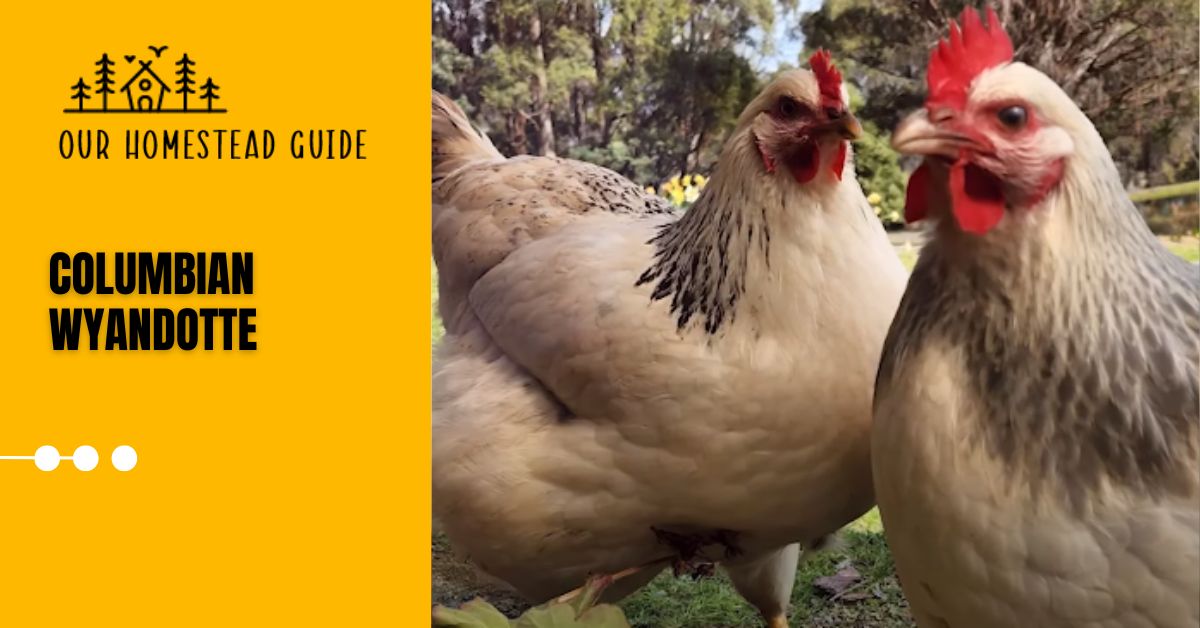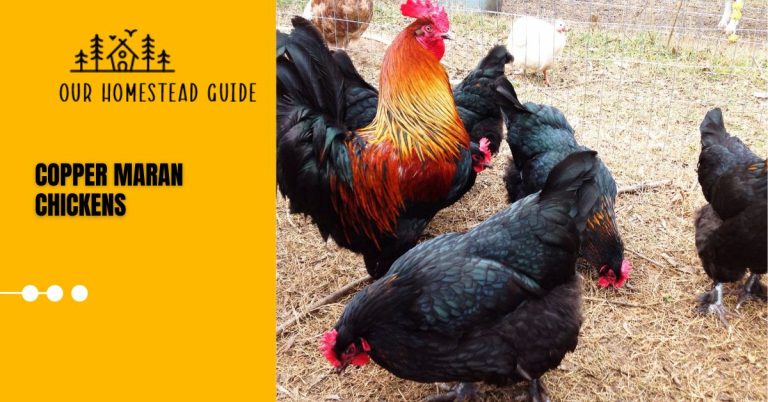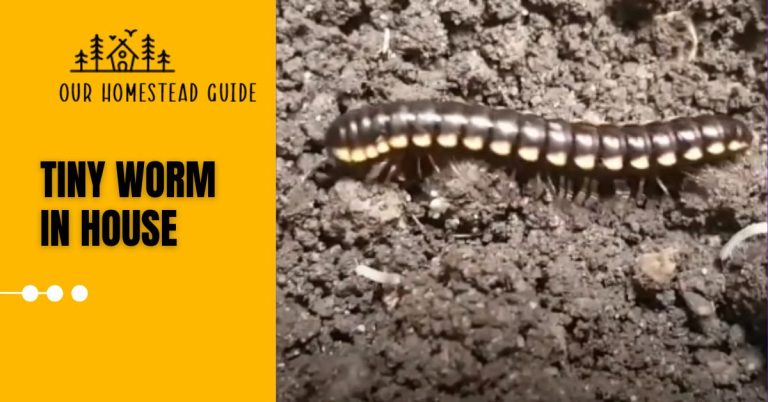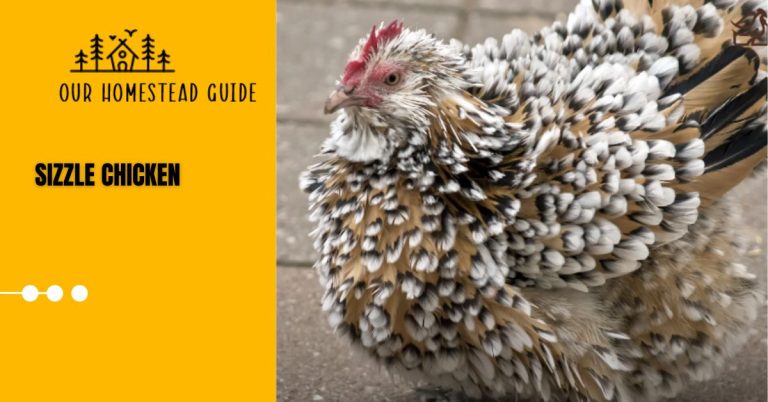Columbian Wyandotte Chicken: Characteristics & Raising Tips
The Columbian Wyandotte chicken is a beautiful color variety of the Wyandotte species. Their simple maintenance and gentle demeanor make them an excellent bird for beginners. For both novice and experienced chicken lovers, the Columbian Wyandotte is an excellent option.
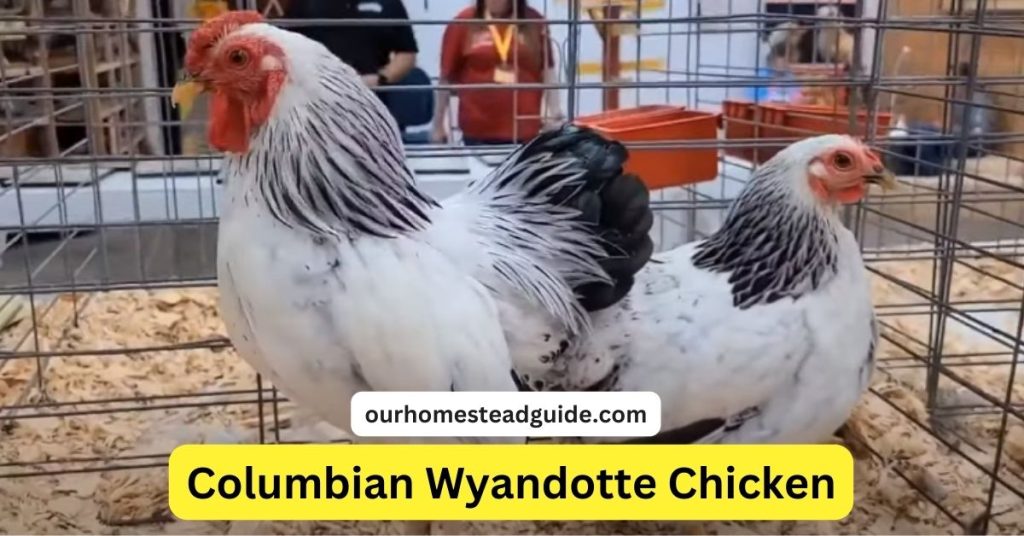
This article will describe the interesting history of bird characteristics and their growth points.
Columbian Wyandotte Chicken Characteristics
| Characteristic | Description |
|---|---|
| Appearance | Primarily white with black collar and tail feathers, round and fluffy body, rose comb, various lace color varieties available |
| Size | Medium to large (around 7 pounds) |
| Egg Laying | 200-250 medium brown eggs per year |
| Meat | Dual-purpose, smaller yellow-skinned breasts than typical broilers |
| Temperament | Calm, friendly, docile, can be independent and noisy |
| Other Characteristics | Excellent foragers, cold-hardy, good mothers (can be broody) |
Columbian Wyandotte Chicken Raising Tips
Coop and Run:
- Give them a roomy run and coop to suit their size and need for foraging.
- Make sure there is enough ventilation and draft protection.
- Provide many nesting boxes so that eggs can be laid.
Diet:
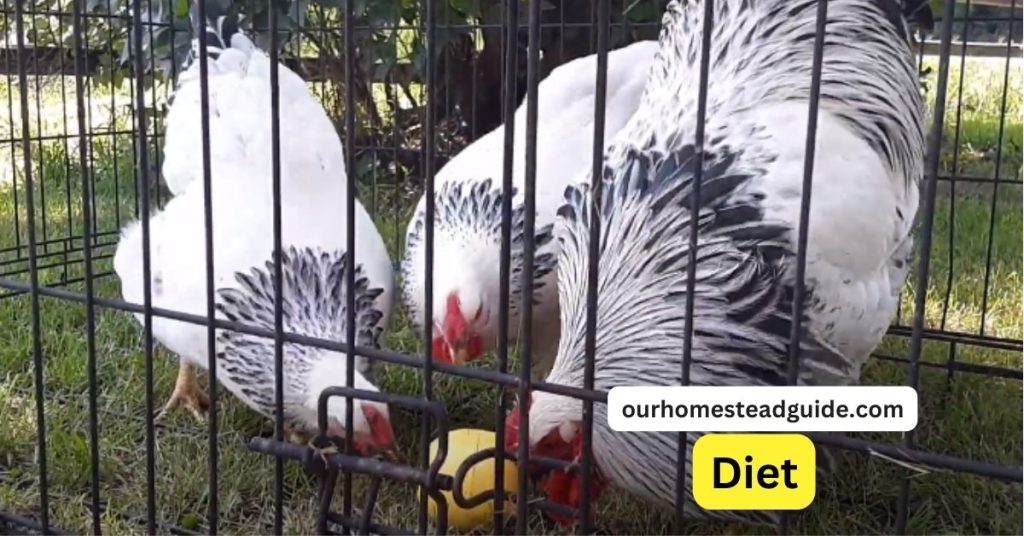
- Feed them premium commercial chicken feed that is appropriate for their life stage and age.
- For extra nutrition, include fresh produce, fruits, and greens.
- Make sure there is always availability of fresh, clean water.
Brooding:
- Keep the right brooding conditions, including enough room and warmth, for hatching chicks.
- Reduce the temperature gradually as the chicks grow.
- Give them access to a waterer and feeding for brooders.
Healthcare
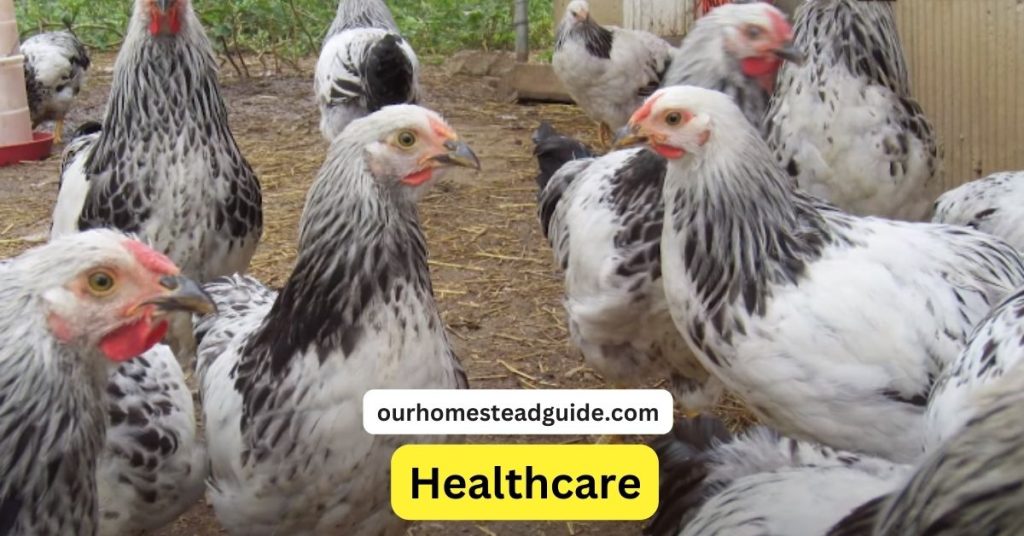
- Keep a close eye out for any symptoms of frailty or disease in your Wyandottes.
- Should you have any worries regarding their health, speak with a veterinarian.
- Maintain proper coop hygiene to stop the spread of illness.
Preventing Common Issues:
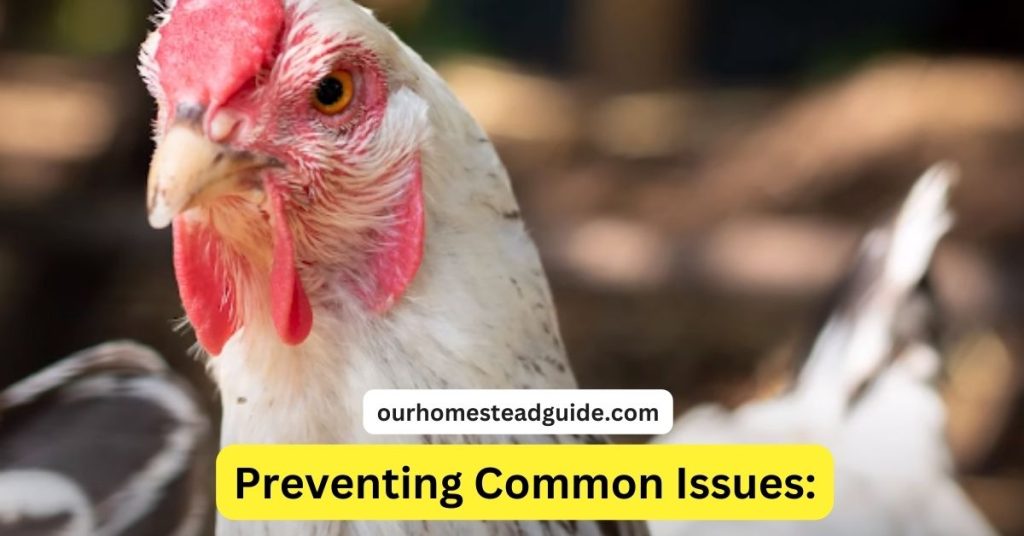
- Bumblefoot: Check their feet frequently for bumblefoot and take quick care of any problems.
- Frostbite: To preserve their combs during the chilly winter months, use a warming light inside the coop.
- Broodiness: To help a hen stop her broodiness, take away her nesting supplies and restrict her access to the coop.
Additional Tips:
- To acquaint your Wyandottes with people, handle them frequently.
- Give them chances to roam freely to promote exercise and natural behavior.
- To get help and support, join online forums or make connections with nearby chicken keepers.
Remember:
- The birds known as Columbian Wyandottes require little upkeep.
- They will flourish and brighten your backyard flock with the right care and attention.
Columbian Wyandotte History
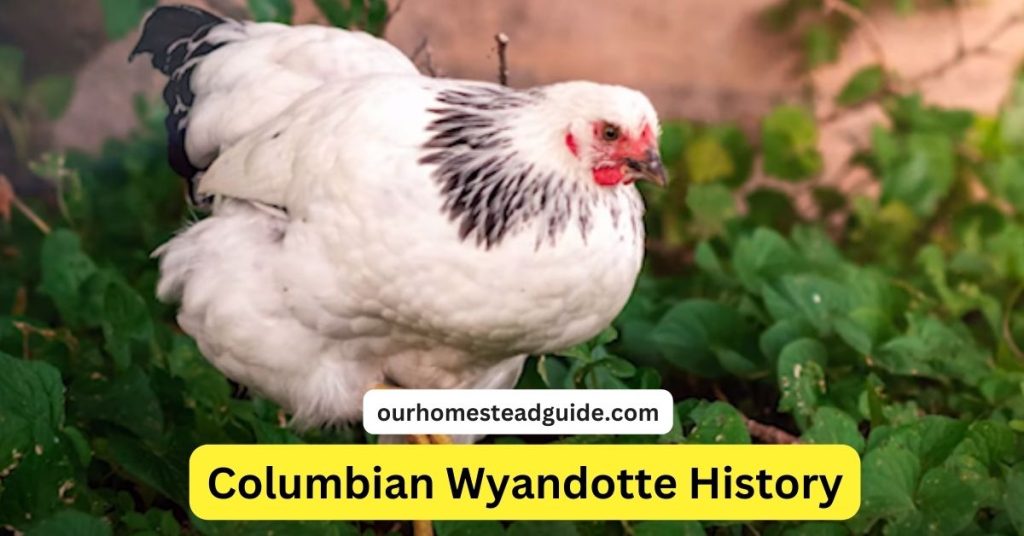
The Columbian Wyandotte is a relatively young breed with a fascinating history:
Origins:
developed in the late 19th century in the United States. Originates from the Barred Plymouth Rock and White Wyandotte. It got its name when it was first displayed in 1893 at the World’s Columbian Exposition in Chicago, Illinois.
Development:
Breeders concentrated on producing a white body with black markings that contrasted to create a distinctive color pattern. Preserving the favorable traits of the Wyandotte, such as its exceptional egg-laying ability, cold hardiness, and submissive demeanor, was also emphasized.
The Columbian Wyandotte ultimately made its way outside of the United States and gained popularity as a breed.
Today:
acknowledged by the American Poultry Association as well as other international poultry associations.
Remains one of the most exquisite and well-liked breeds for dual use. loved by professional producers as well as household breeders.
Interesting Facts:
The Wyandotte breed, which bears the Wendat tribe’s name, has Native American origins.
One of the first breeds to be defined with precise color and feathering standards was the Columbian Wyandotte.
The Columbian Wyandotte comes in several types, such as buff, gold, and silver lace.
Columbian Wyandotte Personality
Beyond their remarkable looks, Columbian Wyandottes are cherished for their endearing dispositions.
Calm and Docile:
They are well-known for being calm and kind, which makes them ideal for families and novices alike.
Usually non-aggressive and manageable, they contribute to a calm and balanced atmosphere in the coop.
Independent and Free-spirited:
Showing off their innate curiosity, they take pleasure in investigating their surroundings and gathering delicious goodies. May go farther than other breeds, therefore protective cages and attention are needed.
Noisy and Cackle-loving:
renowned for their vocalization, sometimes using humorous cackling to convey happiness and delight.
Although this chatty personality might liven up your lawn, it might not be appropriate in city settings.
Motherly Instincts:
has the ability to become brooding and successfully nurture chicks, showcasing their caring nature.
For people who want to raise hens for breeding purposes, this brooding habit may be advantageous.
Do They Get Along with Other Animals?
This kind of chicken often gets along with a variety of birds. They’re also excellent for novices because they don’t usually start conflicts with other animals. They should be kept safe from creatures that may harm them, though, as their curiosity makes them a prime target for predators.
Appearance
Wyandottes come in a variety of forms, but this is among the most distinctive. Let’s examine the appearance of these hens based on their life stage and sex.
Columbian Wyandotte Eggs

The egg hue of a Columbian Wyandotte is typically light brown, however, it can occasionally have a pink undertone. In many instances, the eggs resemble hot chocolate in color and can even be characterized as a deep brown. Medium-sized eggs are always laid by these birds.
Columbian Wyandotte Hen
Except for a ring of black feathers that resembles a choker or collar around the neck, this color variation is nearly entirely white. They may also have black feathers close to their tails and wing tips. Their plump plumage and rounded bodies shield them from the cold.
Columbian Wyandotte Pullet
The teenage version of a chicken is called a “pullet.” This stage separates a chick from an adult. Because their feathers haven’t grown in completely, pullets generally have an ungainly look.
A normal-looking chick with fluffy yellow and black feathers is a Columbian Wyandotte chick. However, when the juvenile birds develop into pullets, the majority of their new feathers become white. Usually, the pullets don’t start growing darker feathers until they are adults.
Columbian Wyandotte Rooster
At eight to nine pounds, Wyandotte roosters are a little heavier than other breeds. This color variant has characteristics with hens, such as a black “collar” and a white body. However, the rooster’s “V-shaped” body makes its black tail stand out more.
Columbian Wyandotte Care Requirements
Coop and Run:
To suit their size and provide space for foraging, provide them a roomy coop and run. Make sure they have enough airflow and are shielded from drafts to be comfortable throughout the seasons. Provide adequate nesting boxes—one box for every four to five hens—so that they may lay eggs.
Diet:
Feed them premium commercial chicken feed that is suitable for their life stage and age. For extra nutrition and enrichment, include fresh fruits, vegetables, and greens in their diet. Make sure you always have access to fresh, clean water to stay hydrated.
Coop Management:
To stop the spread of illness, practice good hygiene by cleaning the coop and running regularly.
Gather eggs every day to keep them from cracking or becoming damaged.
Regularly check their health for any indications of disease or damage.
Winter Care:
To keep them warm in the winter, put more bedding in the coop. Make sure a heat light is available if needed, especially for tiny chicks or in very cold weather. Provide a covered section of the run so they may stay safe from the snow and strong winds.
General Tips:
- Regularly handle your Wyandottes to foster socialization and trust.
- Give them chances to roam freely to promote exercise and natural behavior.
- Keep an eye out for bumblefoot on their feet and take quick action if necessary.
- Should you have any worries regarding their health, speak with a veterinarian.
Columbian Wyandotte Egg Production
The majority of Wyandottes lay three to four eggs per week. Considering that they may lay eggs during the winter, you could receive 200–250 eggs a year. Although they may not lay as many eggs as other well-known varieties, they do lay on a regular timetable.
Conclusion:
If you appreciate caring for gorgeous birds who have serene attitudes and low care needs and will provide you with eggs for most of the year, then Columbian Wyandotte chickens are for you. Many people adore Wyandotte hens, which make for excellent backyard chickens due to their practicality, stunning appearance, and individual appeal.
Most Frequently Asked Questions!
1- Are Columbian Wyandottes good for beginners?
Yes, they are perfect for novices due to their quiet and compliant demeanor. They are robust and require very little care.
2- How much space do Columbian Wyandottes need?
Because of their size and need for space to forage, they need a large coop and run. In the coop, try to get at least 4 square feet per bird; in the run, aim for 10 square feet per bird.
3- How many eggs do Columbian Wyandottes lay?
Even in cold weather, they are prolific layers, producing 200–250 medium brown eggs annually.
4- Are Columbian Wyandottes good meat birds?
Indeed, because they produce both meat and eggs, they are regarded as a dual-purpose breed. Compared to regular broilers, their meat is tasty and has smaller breasts and yellow skin.
5- Are Columbian Wyandottes cold-hardy?
Yes, they are ideal for colder locations because of their thick feathers and rose comb.
6- Do Columbian Wyandottes go broody?
They can go broody and successfully hatch chicks.
7- What are the different color variations of Columbian Wyandottes?
In addition to the traditional black and white Columbian, there are variations with buff, gold, and silver laces.
8- How do I prevent bumblefoot in my Columbian Wyandottes?
Check their feet frequently for any indications of bumblefoot, such as fever, redness, or swelling. Make sure the coop is dry and clean, and give them perches and other foot-friendly surfaces.
9- How can I encourage my Columbian Wyandottes to lay more eggs?
Make sure they get enough sunlight (14–16 hours a day), balanced food, and lots of fresh water. Take care of them, and give them cozy nest boxes.
10- Where can I find more information about Columbian Wyandottes?
Numerous internet resources are accessible, including websites devoted to hens, breed organizations, and poultry discussion boards. For further information, get in touch with the hatchery or extension office in your area.
you may also like this article.

